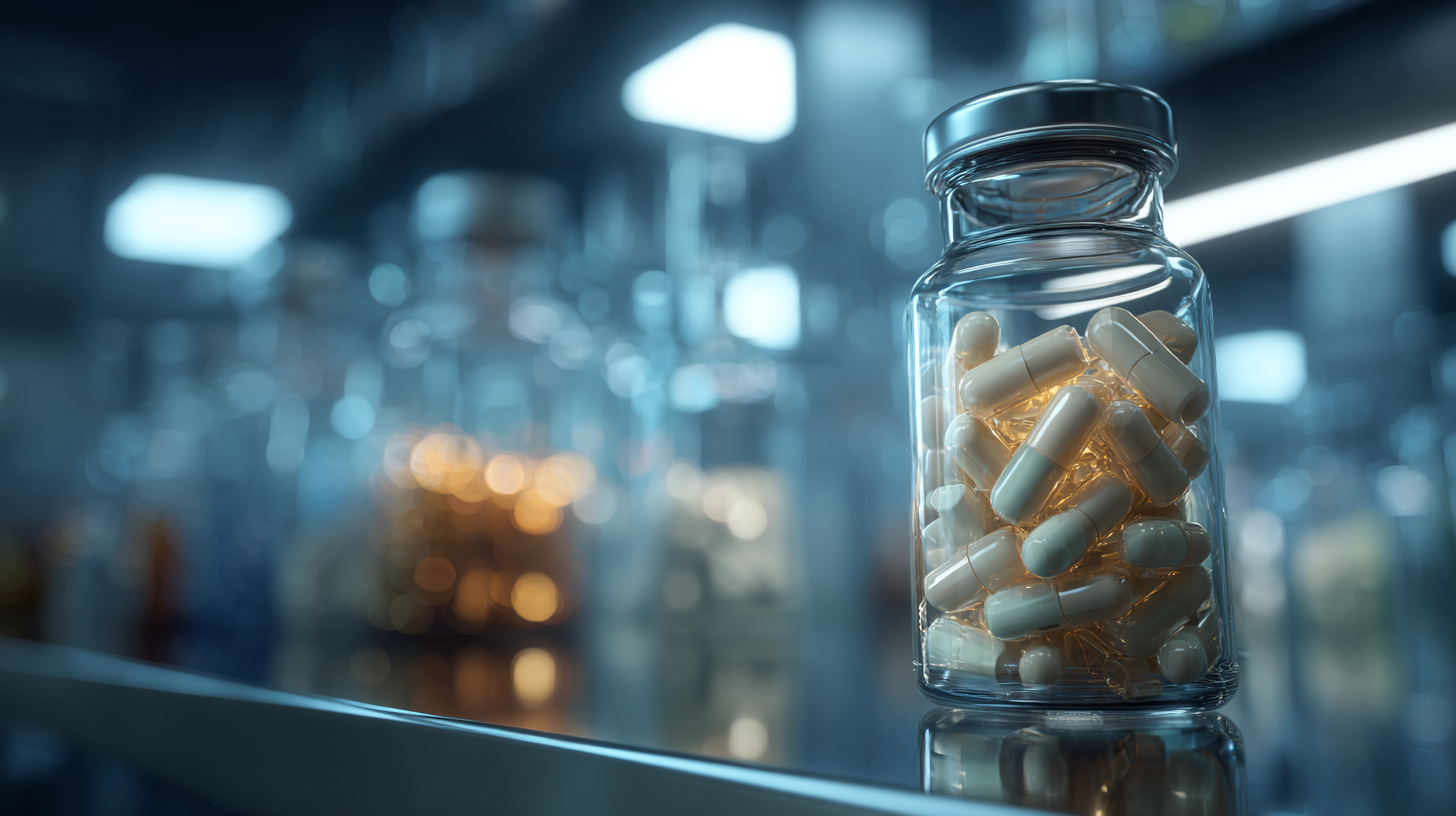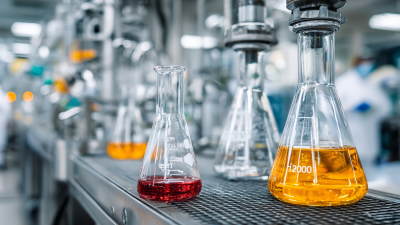
Understanding the Importance of Drug Raw Materials in Modern Pharmaceutical Development
In the ever-evolving landscape of pharmaceutical development, the significance of drug raw materials cannot be overstated. These essential components serve as the foundation for the formulation of effective medications, ensuring their efficacy and safety for patient use. Understanding the meticulous process of sourcing, manufacturing, and testing drug raw materials is crucial for pharmaceutical companies aiming to innovate and comply with stringent regulatory standards. This article delves into the critical role that drug raw materials play in modern pharmaceutical practices, exploring best practices, quality control measures, and the latest advancements in sourcing strategies. By highlighting how these raw materials influence the overall drug development process, we aim to provide a comprehensive guide for industry professionals seeking to enhance their understanding and management of this vital aspect of pharmaceutical production.

The Role of Drug Raw Materials in Pharmaceutical Innovation
The role of drug raw materials in pharmaceutical innovation cannot be overstated. These materials serve as the foundation for the development of new therapeutic agents, impacting the efficacy, safety, and overall quality of medications. As researchers strive to create cutting-edge treatments, the selection and sourcing of high-quality drug raw materials become pivotal. Advances in technology have paved the way for more efficient and precise manufacturing processes, allowing for the creation of complex molecules that were previously unattainable.
Moreover, the integration of drug raw materials in pharmaceutical innovation is essential for addressing current health challenges. With the rise of global health threats, such as antibiotic resistance and emerging infectious diseases, the ability to rapidly develop and produce novel drugs relies heavily on the availability and quality of raw materials. This demand necessitates a robust supply chain that ensures both consistency and regulatory compliance. As the pharmaceutical industry evolves, the focus on high-quality raw materials will continue to drive research and development, ultimately improving patient outcomes and healthcare solutions.
Key Factors Influencing the Selection of Raw Materials
The selection of raw materials is crucial in modern pharmaceutical development, as it directly impacts the safety, efficacy, and quality of drug products. One of the primary factors influencing this choice is the source of the materials. Manufacturers must ensure that raw materials are obtained from reputable suppliers who comply with Good Manufacturing Practices (GMP). This not only minimizes the risk of contamination but also guarantees the consistency and reliability of the substances used in drug formulation.

Another significant consideration is the regulatory requirements surrounding raw material selection. Different countries and regions have varying standards and guidelines that govern the quality and safety of pharmaceutical components. Companies must navigate these regulatory landscapes to ensure that their raw materials meet the required specifications, thereby avoiding potential legal issues and ensuring patient safety. Furthermore, the chemical purity of the raw materials plays a vital role, as impurities can lead to adverse reactions or affect the therapeutic effectiveness of the drug. Thus, meticulous assessment and diligent sourcing of raw materials are essential components in the successful development of pharmaceuticals.
Assessing Quality Standards for Pharmaceutical Raw Materials
The quality of pharmaceutical raw materials is crucial to the success of drug development and the safety of end products. According to a report by the International Pharmaceutical Federation (FIP), more than 70% of drug failures in clinical trials can be attributed to suboptimal raw materials. This underscores the necessity for stringent quality standards to ensure that these materials meet regulatory requirements and are fit for purpose. The impact of raw material quality extends beyond just compliance; it directly influences potency, shelf life, and overall effectiveness of pharmaceuticals.
To assess quality, organizations like the United States Pharmacopeia (USP) continuously update their standards and testing methods. The USP's annual report indicated that over 20% of pharmaceutical products tested were found lacking in quality attributes, prompting the need for more rigorous quality assurance frameworks. Furthermore, the implementation of Good Manufacturing Practices (GMP) plays a vital role in maintaining high standards throughout the supply chain. By adhering to these established guidelines, pharmaceutical companies can mitigate risks associated with raw material sourcing and ultimately deliver safer, more effective treatments to patients.
Strategies for Sourcing and Supply Chain Management
In the realm of modern pharmaceutical development, sourcing high-quality drug raw materials is essential. As the industry continues to evolve, effective supply chain management becomes a cornerstone for ensuring the timely delivery of these critical components. Establishing strong relationships with suppliers, conducting thorough audits, and diversifying sources can significantly mitigate risks associated with raw material shortages and quality variability.

Tips: One effective strategy for sourcing is to collaborate with suppliers on the development of raw materials, ensuring that they meet your specific quality standards. Additionally, consider implementing technology-driven supply chain solutions that provide real-time visibility, enabling proactive decision-making and rapid response to potential disruptions.
Moreover, analyzing market trends and engaging in strategic partnerships can enhance your supply chain resilience. Building a reliable network of suppliers across different geographies can help cushion the impact of any regional disruptions.
Tips: Regularly review your supply chain strategy and remain agile, ready to adapt to changes in the market or regulatory landscape. It's also beneficial to establish contingency plans that include alternate suppliers to ensure continuity in the face of unforeseen challenges.
Future Trends in Drug Raw Material Development
The pharmaceutical industry is undergoing a transformative phase, particularly in the domain of drug raw materials. Future trends suggest an increasing focus on sustainability and innovation in sourcing and production. A recent report from Grand View Research forecasts that the global pharmaceutical excipients market size will reach USD 9.1 billion by 2025, growing at a compound annual growth rate (CAGR) of 6.9%. This shift is driven by the rising demand for biopharmaceuticals and the growing emphasis on the quality and safety of raw materials.
Moreover, advancements in technologies such as Artificial Intelligence and machine learning are poised to revolutionize the way drug raw materials are developed. According to a study published in the Journal of Pharmaceutical Sciences, AI-driven methodologies have the potential to reduce the time for raw material development by as much as 30%. This not only streamlines the production process but also enhances the efficacy and safety profiles of the final pharmaceutical products, indicating a future where agility and precision in raw material sourcing become crucial factors in drug development success.
Understanding the Importance of Drug Raw Materials in Modern Pharmaceutical Development
| Raw Material Type | Purity Level (%) | Source | Current Trends | Future Outlook |
|---|---|---|---|---|
| Active Pharmaceutical Ingredients (APIs) | 98% | Synthetic and Natural | Increased focus on biologics | Sustainable sourcing practices |
| Excipients | 95% | Vegetable and Mineral Sources | Microencapsulation technologies | Personalized medicine applications |
| Solvents | 99% | Petrochemical and Biochemical | Greener solvent options | Increased regulation on toxic substances |
| Stabilizers | 97% | Synthetic Polymers | Use in complex formulations | Innovation in long-lasting formulations |
Related Posts
-

Unlocking the Future of Healthcare with Innovative Pharmaceutical Materials
-

Discovering Reliable Supply Chains for Drug Raw Materials in a Competitive Global Market
-

Navigating Issues with Sourcing Best Pharmaceutical Chemical Powder in a Competitive Market
-

How to Select the Right Pharmaceutical Chemicals for Your Manufacturing Process
-

The Future of Drug Raw Material Innovation in Pharmaceutical Manufacturing
-

The Ultimate Guide to Sourcing the Best Pharmaceutical Materials for Global Procurement
